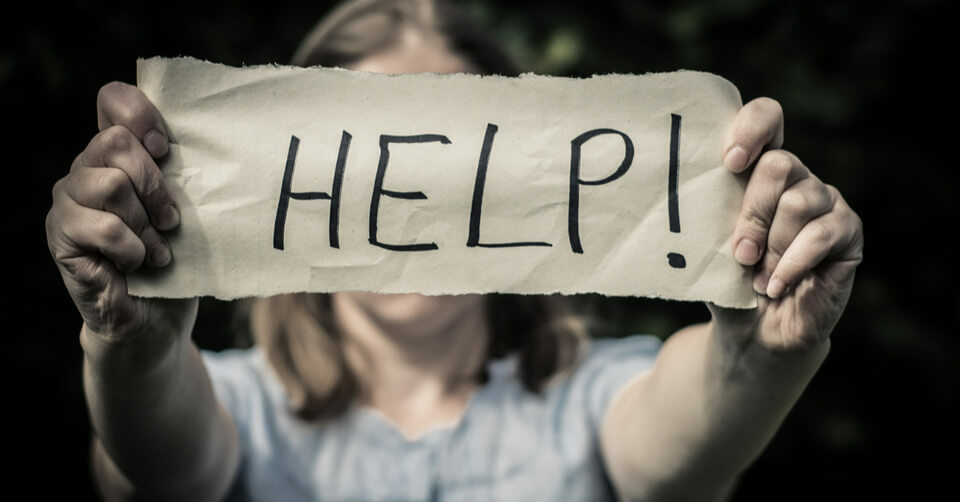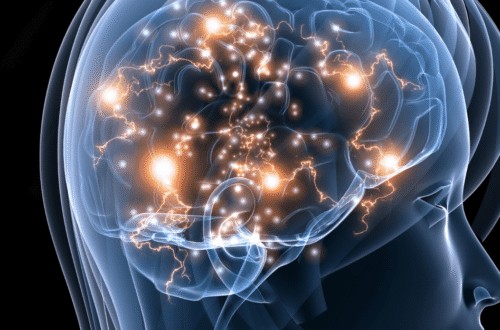Mental health is just as vital as physical health, yet it’s often overlooked until it becomes a crisis. From the outside, someone struggling with mental health issues might seem “fine,” but inside, they could be grappling with overwhelming emotions or thoughts. This article dives deep into understanding mental health issues, spotting the signs, and finding effective help, all while sharing real stories and practical advice to guide you or someone you care about.
Why Mental Health Matters
Mental health affects how we think, feel, and act every day. It shapes our relationships, productivity, and overall well-being. Ignoring it can lead to serious consequences, like strained relationships or even physical health problems. Let’s explore how to recognize mental health struggles and take action.
The Stigma Around Mental Health
Despite growing awareness, many still hesitate to talk about mental health due to stigma. People fear being labeled as “weak” or “crazy.” I once knew a friend, Jake, who hid his anxiety for years, worried his colleagues would judge him. Breaking this stigma starts with open conversations and understanding the signs.
Common Mental Health Issues
Mental health issues come in many forms, each with unique symptoms. Recognizing them is the first step to getting help. Below are some of the most common conditions and their key signs.
Anxiety Disorders
Anxiety disorders affect millions, causing excessive worry or fear. Symptoms include racing thoughts, sweating, or feeling restless. Someone with anxiety might avoid social situations or struggle with decision-making.
Generalized Anxiety Disorder (GAD)
GAD involves chronic worry about everyday things, often without a clear cause. You might feel tense or have trouble sleeping. A colleague once shared how her constant “what-ifs” kept her up at night, impacting her work.
Panic Disorder
Panic disorder leads to sudden, intense panic attacks with physical symptoms like a racing heart or shortness of breath. These can feel like a heart attack, causing fear of future episodes.
Depression
Depression is more than feeling sad—it’s a persistent low mood that drains energy and joy. Signs include hopelessness, fatigue, or loss of interest in hobbies. My cousin once described it as “living in a fog” where nothing feels vibrant.
Bipolar Disorder
Bipolar disorder involves extreme mood swings, from manic highs to depressive lows. During mania, someone might feel unstoppable, while lows bring deep despair. Early recognition can prevent risky behaviors.
Post-Traumatic Stress Disorder (PTSD)
PTSD develops after trauma, with symptoms like flashbacks, nightmares, or hypervigilance. A veteran I met shared how loud noises triggered memories of combat, making daily life a challenge.
Obsessive-Compulsive Disorder (OCD)
OCD involves intrusive thoughts and repetitive behaviors, like excessive hand-washing or checking locks. These rituals can consume hours, disrupting life. A friend once confessed she couldn’t leave home without checking her stove multiple times.
How to Spot Mental Health Issues
Spotting mental health issues requires attention to behavioral, emotional, and physical changes. Here’s what to look for in yourself or others.
Behavioral Changes
Sudden shifts in behavior, like withdrawing from friends or neglecting responsibilities, can signal a problem. If someone stops showing up to social events or seems unusually irritable, take note.
Signs in Daily Life
- Avoiding social interactions
- Missing work or school
- Changes in eating or sleeping habits
Emotional Signs
Emotional changes, like persistent sadness or unexplained anger, are red flags. Someone might seem detached or overly anxious about small things. I once noticed a coworker’s forced smiles hid deep sadness.
Physical Symptoms
Mental health issues often manifest physically, like headaches, fatigue, or stomach issues. Chronic stress might cause muscle tension or unexplained pain. These signs are easy to dismiss but shouldn’t be ignored.
Comparison: Normal Stress vs. Mental Health Issues
| Aspect | Normal Stress | Mental Health Issue |
|---|---|---|
| Duration | Short-term, tied to events | Persistent, even without clear triggers |
| Impact | Manageable, doesn’t disrupt daily life | Disrupts work, relationships, or self-care |
| Symptoms | Mild worry, temporary fatigue | Severe mood swings, physical symptoms |
| Resolution | Resolves with time or solutions | Requires professional help or intervention |
Why Early Detection Matters
Catching mental health issues early can prevent them from worsening. Early intervention often leads to better outcomes, like faster recovery or less severe symptoms. Think of it like catching a cold before it turns into pneumonia.
The Cost of Ignoring Symptoms
Ignoring signs can lead to job loss, broken relationships, or even physical health decline. A study by the National Alliance on Mental Illness (NAMI) found that untreated mental health issues cost the U.S. economy $193 billion annually in lost productivity.
How to Get Help for Mental Health Issues
If you or someone you know is struggling, help is available. Here’s a step-by-step guide to finding support, from self-help to professional care.
Self-Help Strategies
Start with small, manageable steps to improve mental health. These won’t replace professional help but can make a difference.
- Exercise: Physical activity boosts mood. Even a 20-minute walk can help.
- Mindfulness: Practices like meditation or journaling reduce stress.
- Sleep Hygiene: Prioritize 7–9 hours of quality sleep.
- Social Connection: Reach out to trusted friends or family.
Talking to Someone You Trust
Opening up to a friend or family member can lighten the load. When I was feeling overwhelmed, talking to my sister helped me feel less alone. Choose someone who listens without judgment.
Professional Help Options
For persistent symptoms, professional help is crucial. Here’s where to start.
Therapists and Counselors
Therapists offer talk therapy, like cognitive-behavioral therapy (CBT), to address thought patterns. Online platforms like BetterHelp or Talkspace make finding a therapist easier.
Psychiatrists
Psychiatrists can prescribe medication for conditions like depression or bipolar disorder. They often work with therapists for comprehensive care.
Support Groups
Support groups, like those offered by NAMI, provide community and shared experiences. They’re often free and available in-person or online.
Where to Find Help
- National Suicide Prevention Lifeline: Call 988 for immediate crisis support.
- SAMHSA’s Helpline: 1-800-662-HELP for treatment referrals.
- Online Resources: Websites like NAMI.org or MentalHealth.gov offer guides and directories.
- Local Clinics: Search for community mental health centers near you.
Pros and Cons of Seeking Help
| Pros | Cons |
|---|---|
| Improved mood and coping skills | Cost of therapy or medication |
| Better relationships and productivity | Time commitment for sessions |
| Access to professional guidance | Stigma or fear of judgment |
| Long-term health benefits | Finding the right therapist can take time |
People Also Ask (PAA)
Here are real questions from Google’s PAA section, answered concisely.
What Are the 5 Signs of Mental Illness?
Five common signs include persistent sadness, extreme mood swings, social withdrawal, changes in sleep or appetite, and difficulty concentrating. If these persist for weeks, seek help.
How Do I Know If I Need Mental Health Help?
If your emotions, thoughts, or behaviors interfere with daily life—work, relationships, or self-care—it’s time to seek help. Trust your instincts if something feels off.
What Are Common Triggers for Mental Health Issues?
Triggers vary but include stress, trauma, loss, or major life changes. For example, job loss or a breakup can spark anxiety or depression in some people.
Where Can I Get Free Mental Health Support?
Free support is available through hotlines like 988, community clinics, or organizations like NAMI. Online forums like 7 Cups also offer free peer support.
Tools and Apps for Mental Health Support
Technology can complement professional help. Here are some top tools:
- Headspace: Guided meditation for stress and anxiety.
- Calm: Sleep stories and relaxation exercises.
- Moodpath: Tracks mood and offers insights for therapy.
- Talkspace: Connects you with licensed therapists online.
Comparison: Free vs. Paid Mental Health Apps
| Feature | Free Apps | Paid Apps |
|---|---|---|
| Cost | Free or low-cost | Subscription ($10–$70/month) |
| Features | Basic meditation, mood tracking | Therapy sessions, advanced tools |
| Access | Limited content | Full access to resources |
| Best For | Beginners, budget-conscious users | Those seeking therapy or depth |
FAQ Section
How Can I Tell If a Loved One Is Struggling?
Look for changes in behavior, like irritability, withdrawal, or neglecting responsibilities. Gently ask how they’re feeling and offer support without pushing.
Is Therapy Worth the Cost?
Therapy can be expensive, but many find it life-changing. Online options like BetterHelp start at $60/week, and some insurance plans cover sessions.
Can Mental Health Issues Go Away on Their Own?
Mild issues may improve with lifestyle changes, but persistent symptoms often require professional help. Early intervention prevents worsening.
What Should I Do in a Mental Health Crisis?
Call 988 immediately for crisis support. Stay calm, listen without judgment, and ensure the person is safe until help arrives.
Are Online Therapy Platforms Effective?
Yes, studies show online therapy, like CBT via Talkspace, can be as effective as in-person sessions for many conditions, especially with regular use.
Taking the First Step
Mental health issues can feel isolating, but you’re not alone. Whether it’s noticing signs in yourself or a loved one, taking action—whether through self-help, talking to someone, or seeking professional care—can change lives. I remember when a friend finally sought therapy after years of silent struggles; it was like watching them rediscover their spark. Start small, reach out, and know that help is closer than you think.





